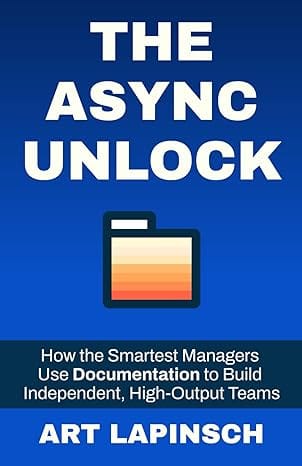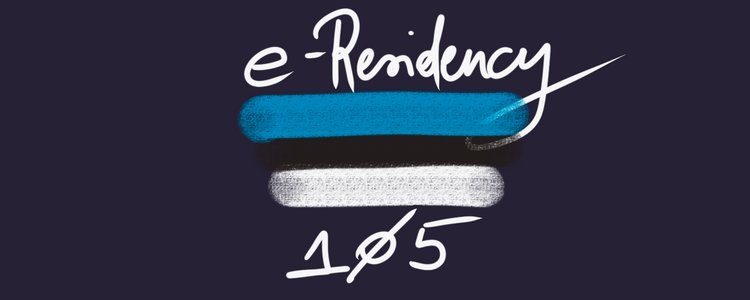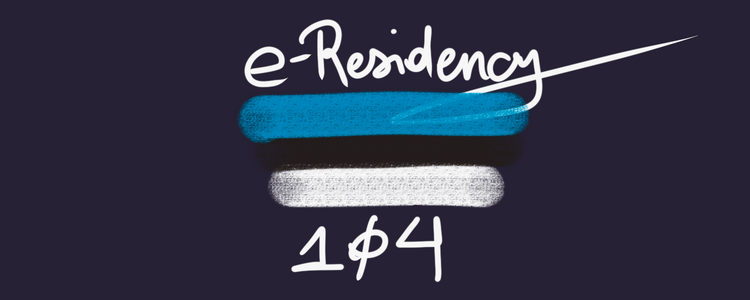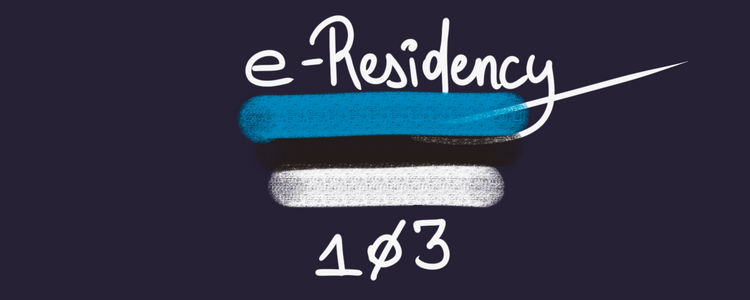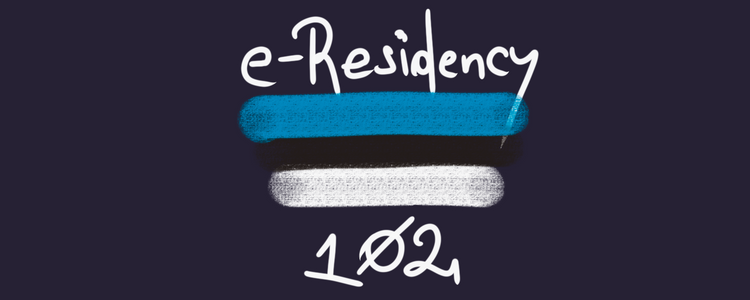Communication Disasterclass: Why Traditional Companies Struggle with Remote Work
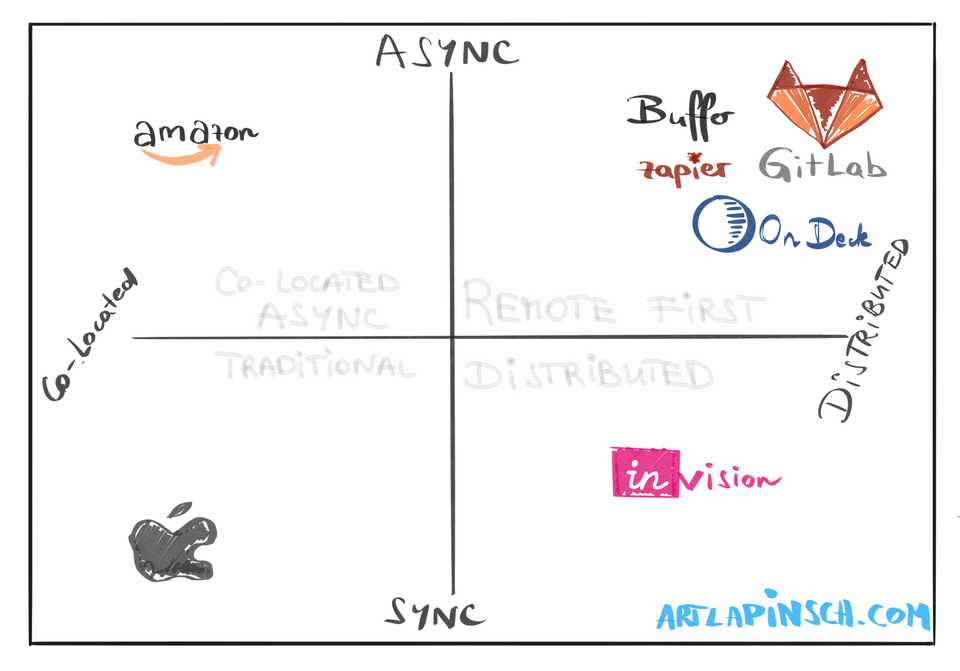
This is part 1 in a blog series about managing communication in remote organizations.
When companies go from co-located to remote work it looks something like this:
These posts focus on internal communication, and how it can make or break an organization. Especially when working in a remote setup.
Let's go.
The Great Migration: Covid-19 as an Accelerant to Remote Work Adoption
In the good old days - Before Covid-19 - organizations came in different flavors.
One way to look at organizations is through the dimensions of [1] location and [2] operational synchronization.
Location: Co-Located vs. Distributed
Teams can be collaborating from the same physical location (= co-located) or they can be spread across different places (= distributed).
Since it is a spectrum, organizations in the middle would use hybrid approaches like satellite offices; alternating schedules; distributed first with regular off site events; etc.
Operational Synchronization: Synchronous vs. Asynchronous
Operational synchronization refers to the "ways of working" at an organization.
Do all team members have the same working hours and are expected to resolve issues via direct-response communication (= synchronous) or does the organization have tools and systems in place to get work done even if collaborators are working on different schedules (= asynchronous)?
Asynchronous work benefits co-located teams too as it gives more individual control over one's own schedule (less distractions = more uninterrupted time for deep work).
4 Flavors of Organizations
When mapping the two dimensions on a 2x2 matrix we can split organizations into 4 types:
- Traditional: Co-located and synchronous
- Co-located async: Co-located and asynchronous
- Distributed: Distributed and synchronous
- Remote first: Distributed and asynchronous
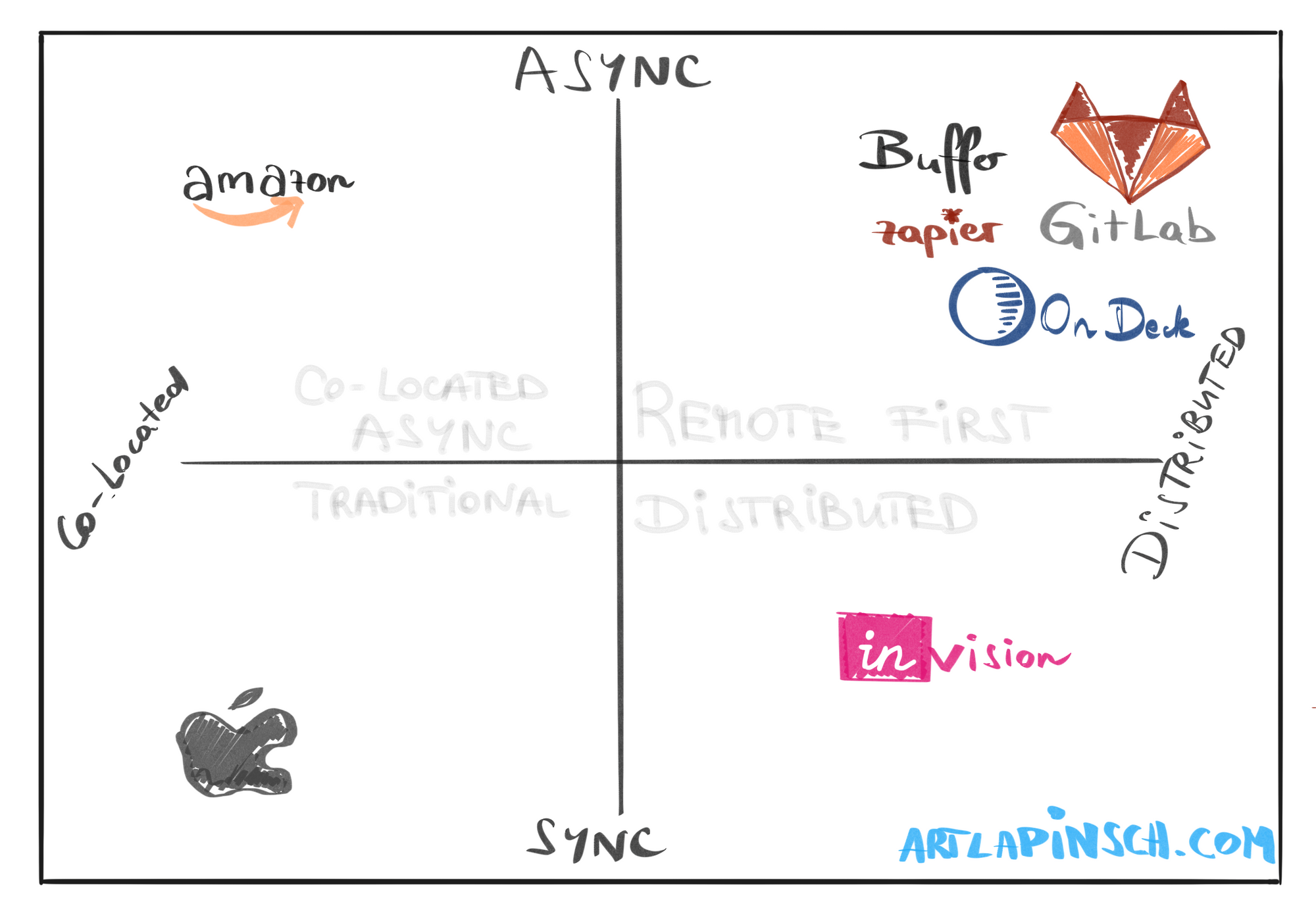
The Great Migration: Co-located Businesses Were Forced to Change Their Ways
Before Covid-19 many co-located organizations would think along these lines:
- "Remote work doesn't work at our scale"
- "Employees would not be as productive working from home"
- "Employees would miss being in the office"
- "We just can't transition our workforce from office work to remote"
Almost everyone who loves the office will tell you how important the water cooler is
— Chris Herd (@chris_herd) January 19, 2021
Almost nobody who loves the office can give you 3 examples of problems they have solved there
Almost like it’s an excuse 🤷♂️
Then Covid-19 happened. Co-located organization - particularly organizations with primarily knowledge workers - were forced to abandon their offices and transition their teams to a distributed setting.
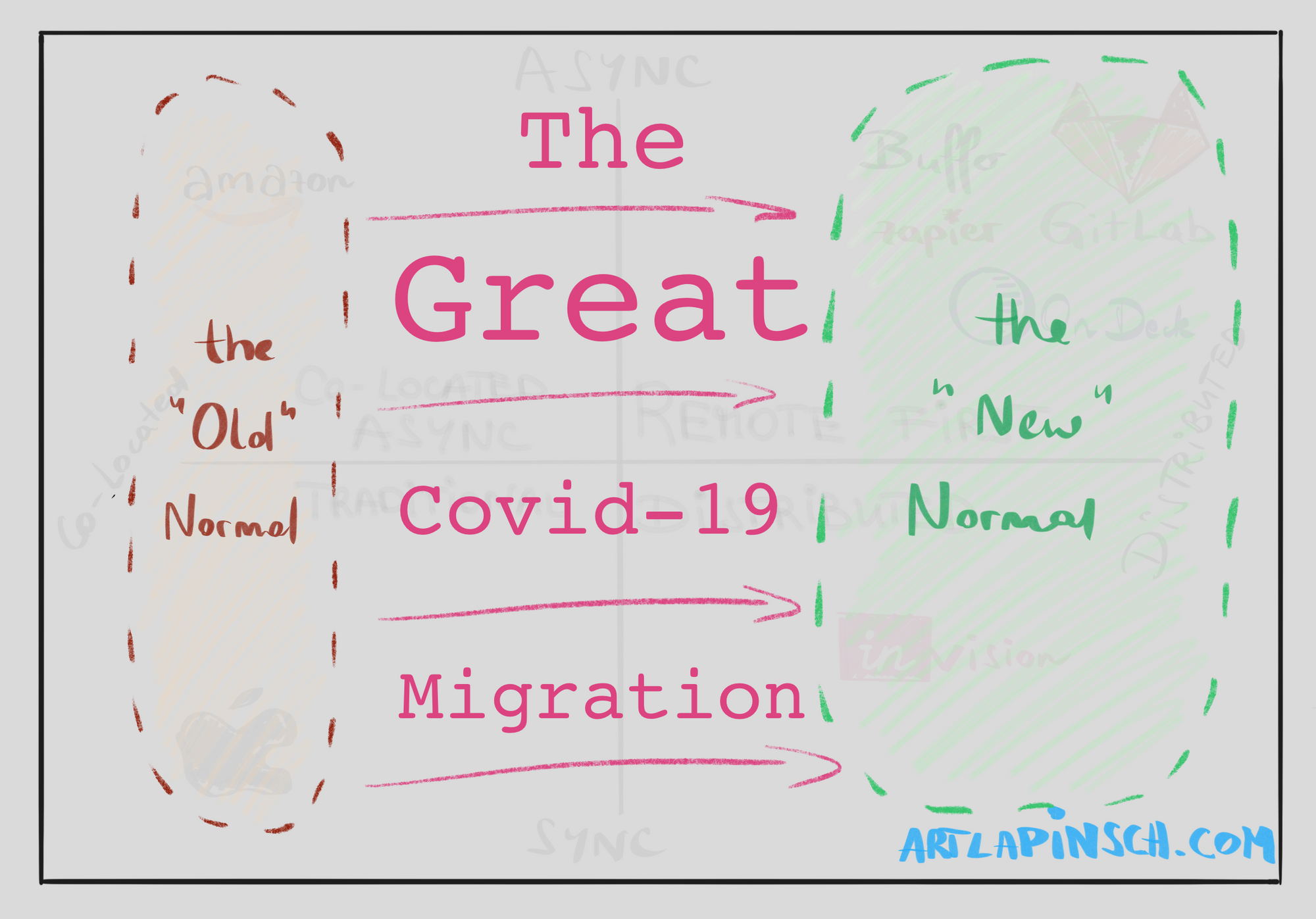
Some companies were more prepared than others.
The WFH Experiment: Employees Adjusting to a New Way of Working
Mid-2020 BCG conducted a research across 12,000 knowledge workers in the US, Germany, and India on the impact of remote work.
In short: Across the board people feel more productive and a majority of the respondents would like to keep a remote or hybrid setup in the future.
⚠️ But the data suggest a relative reduction of productivity for collaborative tasks. ⚠️

"Everything is work now. And now hours become longer and focus can become difficult. Too many meetings that are interrupted by dozens of slack pings makes it hard to focus and difficult to feel like you’re on top of everything." - anonymous friend at tech company
So why is collaboration getting more difficult when switching to remote? 🤔
I have a hypothesis and by the end of this post you'll be able to tell me whether I'm full of sh!t or if there's truth to it.
The OODA Loop: The Algorithm that Runs Your Organization
What do fighter pilots and organizations have in common?
In order to succeed they have to operate efficiently and effectively.
Defining the OODA Loop: Tested Learnings from Military Strategy
John Boyd is a former U.S. Air Force Colonel and strategist. He developed the OODA loop as a mental toolkit to be used for high stakes situations.
The four steps of the OODA loop are:
- Observe: Take in new information
- Orient: Understand the context of the information
- Decide: Synthesize the information
- Act: Execute towards your desired goal
In the context of a business organization the framework can be interpreted as such:
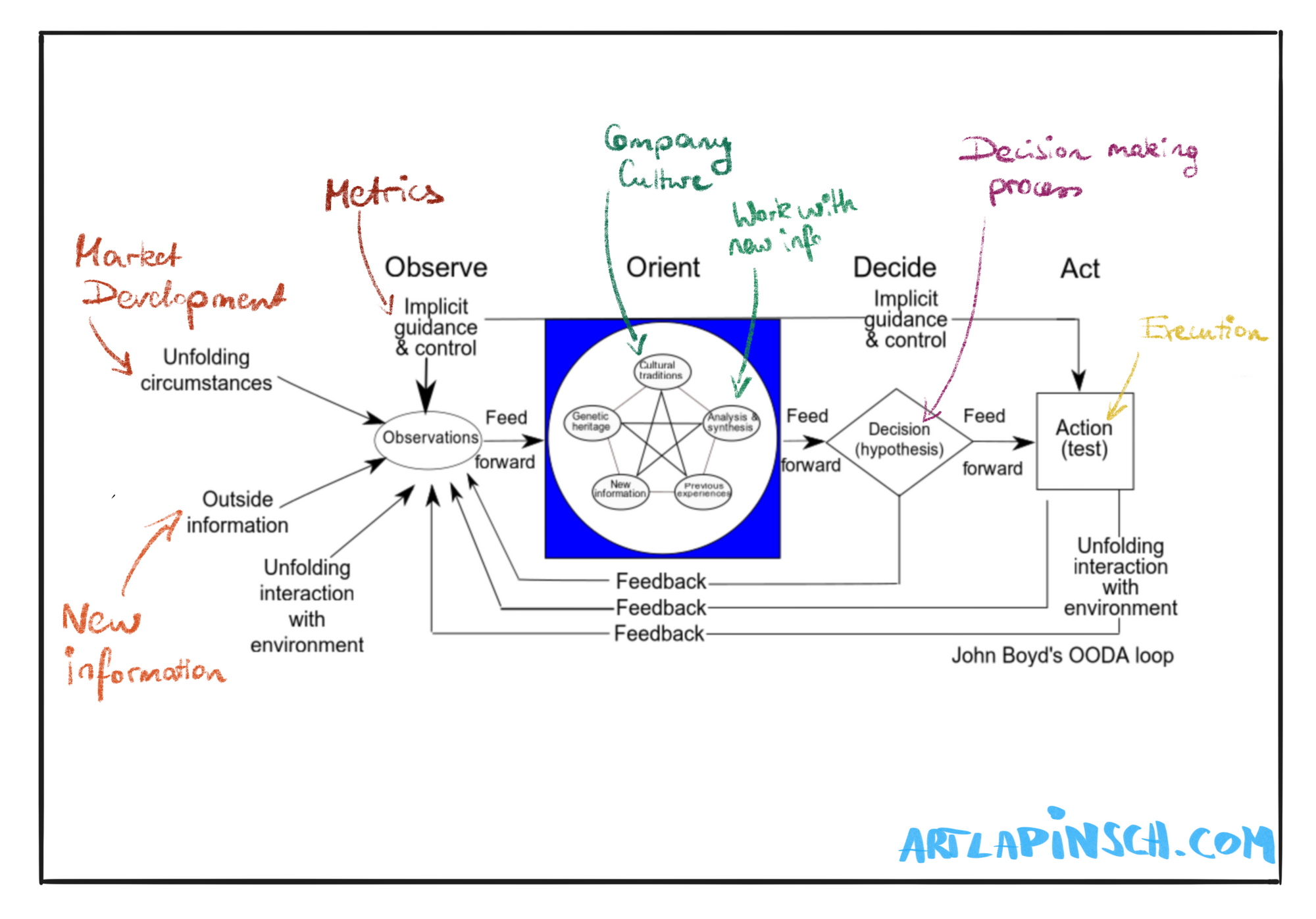
⚡ Tip: This framework can be used as a blue print for organizational audits.
Understanding the OODA Loop: Stages and Transitions
The OODA Loop is essentially an information processing algorithm for an organization:
- Input: Gathering data
- Processing: Processing data to generate insights
- Output: Use insights to operate
- Feedback: Adjust the algorithm based on the above
⚠️ Important: What's interesting is that there are the 4 stages of the O.O.D.A. and there are transitions where information (raw data; processed information; results; feedback) is passed on to other stages.
In an organizational context, transitions can be interpreted as any type of communication (= exchange of information).
Transitions: The Difference between Total Failure and World-Class Performance
“ Success is not final, failure is not fatal: it is the courage to continue that counts.” - Winston Churchill
Communication = Transition: Exchanges of Information in Co-located and Distributed Setups
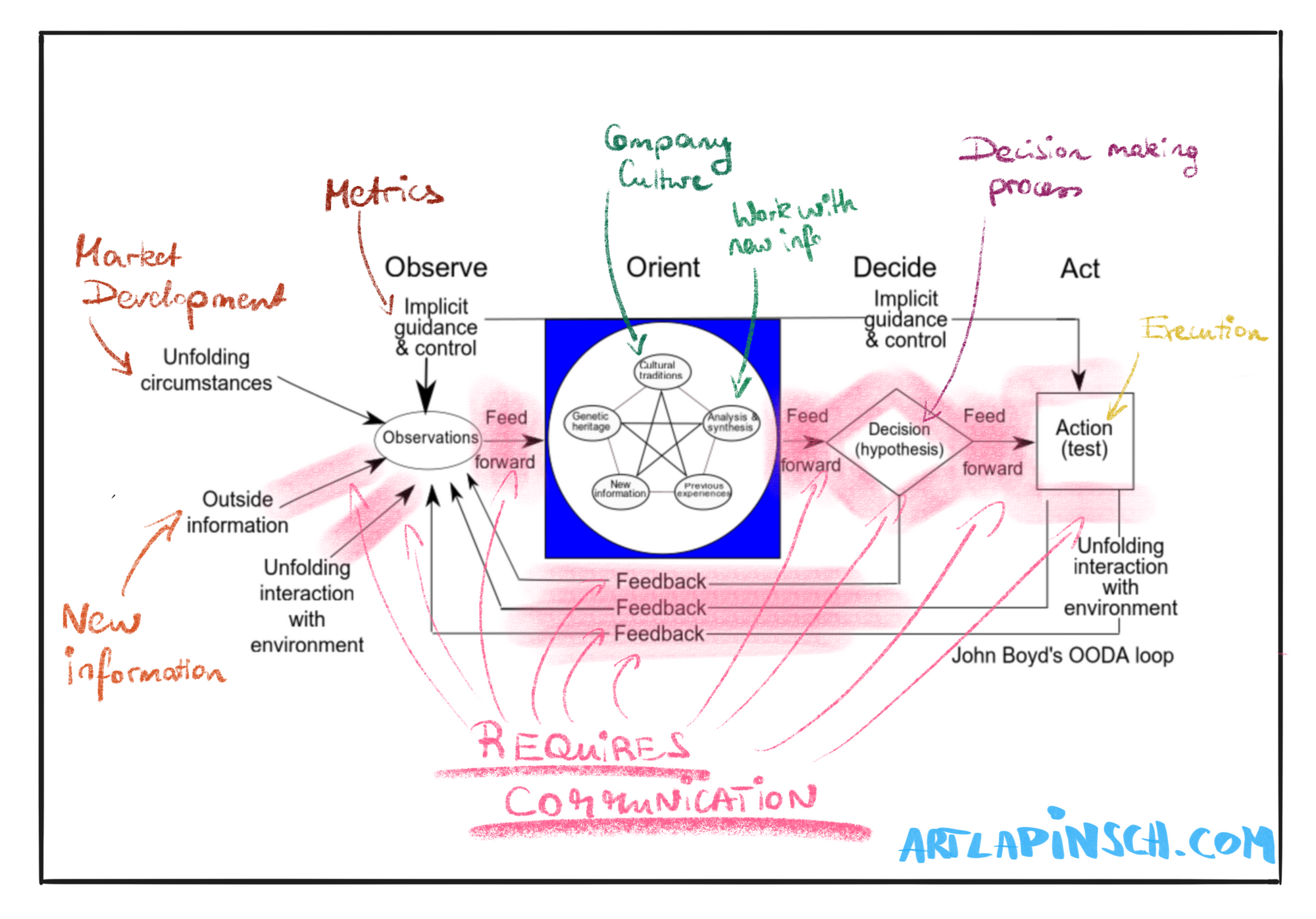
Total Failure: Missing the Transitions
If you remember the 2x2 matrix from above you see that Covid-19 forced many organizations to move from co-location to distribution. Inherently this means that organizations lose one specific type of communication: face-to-face communication.
Face-to-face communication is immediate/synchronized and high-fidelity. Depending exclusively on face-to-face in a distributed world means trouble.
This tweet summarizes it well:
Making work remote without also making it asynchronous only makes it worse. You get the isolation of working alone without the benefit of control over your schedule
— Tiago Forte (@fortelabs) November 12, 2020
When to Do Work: 6 hours of daily zoom meetings, anyone?
These are common problems that individual contributors experience when the change from co-located to remote is not actively managed:
- Information Silos: Observations are not shared between stakeholders
- Incomplete Information: Decisions are made without the best set of insights
- Misaligned Execution: Decisions are not shared with all stakeholders
- No Learning: Missing feedback loops avoid course correction
- [Bonus] Lack of Bandwidth: Too many calls eat up the available hours and no less remains for 'actual' work
The fact that the company culture for its longest time did not include remote work, did not help the transition. From a technical point it all worked really well, but the operational efficiency took a while. - anonymous friend at a finance boutique firm
⚠️ Important: As an organizational leader you need to build the culture and design the systems. Otherwise someone else will.
World-Class Performance: Mastering the Transitions
World-class performers in sports, art, and engineering are masters of transitions (examples in resources below).
GitLab might be the golden standard of mastering the transitions (think "mastering communication") in the OODA Loop for distributed organizations. Their team handbook shows how documentation can be used to exchange information efficiently and enable their teams to be effective.
GitLab's mastery of transitions has allowed them to successfully run a remote-first organization with 1,000+ employees.
I documented all of my learnings in this book 👇
Bottomline: New Realities Need New Thinking
“We can’t just look at our own personal experiences or use the same mental recipes over and over again; we’ve got to look at other disciplines and activities and relate or connect them to what we know from our experiences and the strategic world we live in.” - John Boyd
The Great Migration (Pt. 2): Was it a One-Time Thing or Are We in it for the Long Run?
In 2020 lots of professionals worked remotely for the first time.
Many had a rough first-time experience and are looking forward to going back to the office. That's a shame since there are many examples of large organizations, which operate efficiently and effectively with distributed teams:
Change Is Hard but it Needs Doing
If circumstances change you should check if your previous setup is still up for the task.
- Road freezes up -> Change tires and put chains on
- Temperature drops -> Change clothes
- Workforce starts working from home -> Change nothing
One of these examples is not like the others.
Remote teams need to be inherently more organized to work well and it's the responsibility of leaders to make it happen. 🚀
"I see you, now let's dance."
Problem Hypothesis: Effective and efficient communication processes are different for co-located and distributed settings.
Co-located organizations were forced to move to a distributed setup and had little/no time to adapt their communication processes.
Solution: The next posts will cover:
- A pragmatic way to segment communication methods within organizations
- A useful method for auditing and improving communication
These posts are a synthesis of available best-practices and our own experience of building a remote company from idea to exit. 🏝
Thanks for reading. This topic is close to my heart and I don't pretend to have all the answers.
Thanks to tosh, Mo, MKO, and Finn for edits and input.
If you have thoughts, questions, feedback, resources, critique or just want to chat please ping me on Linkedin.
Resources
- The 80/20 of Remote Team Leadership (Art Lapinsch / remote fabric)
- OODA LOOP: What You Can Learn from Fighter Pilots About Making Fast and Accurate Decisions (Shane Parrish)
- #fyi: How founders can avoid drive-by-management (Andi Klinger)
- Close your office. Now. How to operate your startup under lock-down. (Andi Klinger)
- Pulse Async - Operators Blog (Leonardo Federico)
- The Rise of "Remote Working" (Chris Herd)
- The Hubspot Culture Code (Dharmesh Shah)
- Transitions: Marcelo Garcia in mixed-martial arts (Joshua Weitzkin on Tim Ferriss Podcast)
- Transitions: Lionel Messi in football (3CB Performance)
- Transitions: SpaceX in aerospace engineering (SpaceX)
- Remote Management (remote fabric)
Appendix
📝 Note: Many people struggle to balance their job with personal obligations (caring for loved ones; raising and teaching their kids; etc.). This discussion is out of the scope of this series of posts since [1] I have NO experience with that and [2] it is way too complex.
We all understand that life cannot be reduced down to a simple black-and-white reality but in order to solve problems, you need to break them down into smaller pieces and tackle them bit by bit.
These posts aim to tackle a small piece of the puzzle.
"People fitting into a system that is drifting and lost forces people to invent their own justifications and find their own way." - David Manheim

